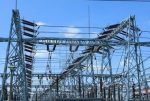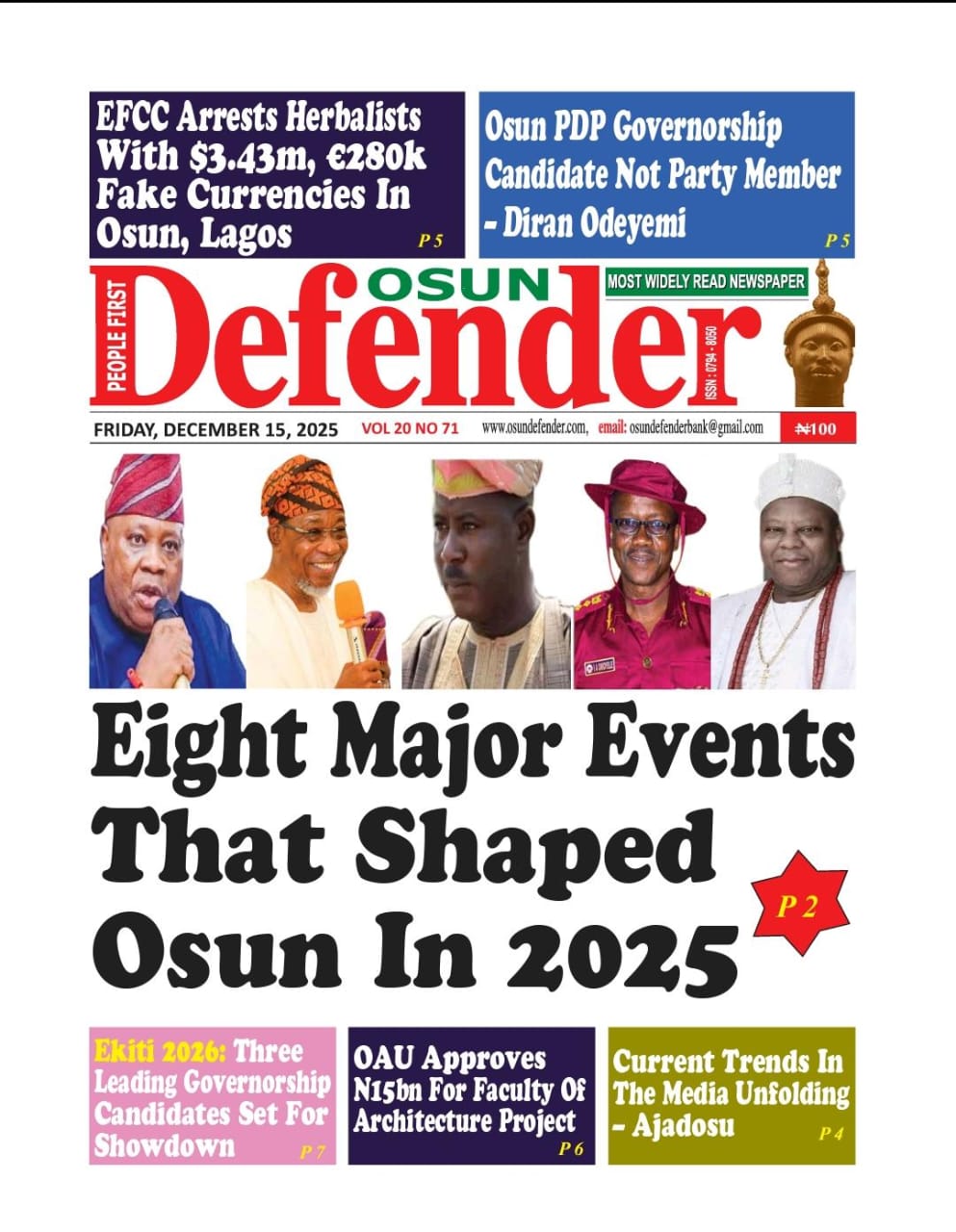Ajaokuta Steel And Nigeria’s Industrialization Dream By Michael Jegede

After Nigeria’s attainment of Independence in 1960, we have had various industrial and economic development plans, designed for the purpose of transforming the country into an industrialized nation that would become a force to reckon with in the global economy.
Sadly, despite the availability of the required natural resources, successive governments failed to make the dream for Nigeria’s industrialization a reality. Our desire to become an industrialized country remains a pipedream because we refused to give maximum priority to the advancement of the steel sector via the completion of the Ajaokuta Steel Complex (ASCO), which was conceived and envisioned as a pivotal element for Nigeria’s industrialization.
That we have not been able to make ASCO come to life, almost forty years after it was initiated, knowing full well that steel is the heartbeat of any national development plan for industrialization, to me, clearly shows how unserious we are as an independent nation. We planned to be among the 20 largest economies in the world by 2020, but we continued to pay lip-service to steel matters as if we don’t know that the capability to produce steel aids industrial growth through which such a target could easily be achieved.
ASCO appears to have indeed become the allegory for the failures that define Nigeria in different areas of our existence as a country. We allowed corruption, lack of political will, international conspiracy and policy summersaults/inconsistencies to continue to tie down the completion of a project capable of positioning Nigeria strategically on the world map of steel production, thereby guaranteeing the realization of our dream for industrialization.
Virtually all the nations that are playing big globally have enhanced capacities for steel production. Even those that do not have any of the key mineral inputs needed for steelmaking have over the years developed the capacity to produce steel. Japan and South Korea, for instance, have no mineral resource for iron and steel, but they rank among the world top ten countries in steel production. On the contrary, Nigeria that is blessed with all the raw materials (iron ore, coal, natural gas and limestone) needed for the manufacture of steel is nowhere to be the found in the global chart of steel production. Nigeria, according to Vice President Yemi Osinbajo, is the 12th largest iron ore resource country in the world. So, to produce steel, which is used in various applications around the world (engineering/construction, manufacturing of cars, ships, vehicle amour and general machinery), we do not have to import the raw materials. We have them in abundance!
Ajaokuta Steel is unarguably the largest integrated steel complex in the sub-Saharan Africa. Yet, we are unable to take the lead in steel production in Africa even in our illusory claim of being the giant of the continent. South Africa and Egypt produced 6.1 and 5.0 million tons of steel respectively in 2016 based on data provided by the World Steel Association (WSA). While South Africa is the 22nd on the list of countries by steel production, Egypt is the 27th. Nigeria did not make the list because only countries with annual production of crude steel of at least 2 million metric tons were included. China, the world’s largest steel producer topped the chart with a production of 808.4 million metric tons which represents about 50% of the global steel output for 2016. Japan and India produced 104.8 and 95.6 million metric tons of crude steel to maintain the 2nd and 3rd position on the list respectively.
China and India fall in the category of Newly Industrialized Countries (NICs). They were nowhere in terms of steel production in the 19th century and at the start of the 20th century. But they worked hard to advance their steel industries and today they have overtaken even the G8 (forum for the world’s major highly industrialized countries) members like US, Britain and Germany that were hitherto leading the pack in the manufacture of steel. Because China and India were determined to belong to the industrialized economies of the world, no international conspiracy could stop them from undergoing industrial and economic reforms that were anchored on steel development. Same applies to South Africa which is the 6th world largest producer of iron ore (the main ingredient for steelmaking) and the only African country regarded as an industrialized nation classified under the NICs. Just like China and India, South Africa is among the G20, an international forum for the governments of 20 major economies of the world and the G8+5 group (the original G8 members plus five NICs).
While ASCO was left to wallow in total neglect, about N6 trillion is spent annually on steel importation as disclosed recently by Engr. Suleiman Umar, the Assistant General Manager (New Initiatives) and Special Adviser Technical to the Sole Administrator of Ajaokuta Steel Company. Presently, we produce between 100,000 and 300,000 tons of steel every year, in spite of our huge potential for steel production, while our consumption stands at about 20 million tons yearly according to reports.
Except for former President Shehu Shagari whose administration exhibited unalloyed commitment to the Ajaokuta Steel project, all other governments after his were obviously nonchalant and undetermined about steel development. Not even Olusegun Obasanjo, who signed the contract for Ajaokuta Steel in 1979, as a Military Head of State before Shagari laid the foundation in 1980, had shown genuine concern towards the completion of the steel project, when he served as a democratically elected President between 1999 and 2007.
As at 1983 when the government of Shagari was toppled by the then General Muhammadu Buhari, Ajaokuta Steel Company was 84% completed. Shagari also completed and commissioned the Delta Steel Company, Oshogbo, Katsina and Jos Steel Rolling Mills that were in the then integrated steel development scheme of government, aimed at serving as a bedrock for Nigeria’s industrialization and diversification of the country’s economy which has been totally dependent on oil. Perhaps, ASCO would have been set for full operation before the expiration of Shagari’s second term, if his government had not been overthrown. Shagari, like Deng Xiaoping, Chinese Paramount Leader from 1978 to 1989 and Jawaharlal Nehru, first Indian Prime Minister (between 1947 and 1964), pursued steel development with a great deal of patriotism and willpower.
Is it not a huge shame that thirty-four years after Shagari was ousted, we are still talking about an uncompleted Ajaokuta Steel, even with the high level of work done under him on the project within a space of three years? Between 1983 and 1994, we dragged the project to 98% completion and for over 23 years now it has remained at that point. This is after spending over $5 billion and only requiring less than a billion dollar for it to become fully operational. If the giant steel plant which is likely to create job for about two million Nigerians (directly and indirectly) and serve as a major source of revenue for the country, needs not more than a billion dollar to be completed, after expending such a whooping amount of money, does it make any sense for us to have abandoned the project?
Upon assumption of office in 2015 as an elected President, Buhari had reiterated his campaign pledge to revive Ajaokuta Steel and make it functional, as part of his administration drive towards diversification and industrialization. Many Nigerians had noted that it would be a big plus for Buhari if indeed he could do anything possible to surmount all the obstacles inhibiting the successful completion and take-off of the Ajaokuta Steel Company.
In his inaugural briefing as Minister of Mines and Steel Development in December 2015, Dr. Kayode Fayemi, emphasized Buhari’s commitment to fix ASCO devoid of any hindrance. With about two years, five months into the current administration, can it be said that Buhari has shown strong determination to tackle the problem bedeviling the Ajaokuta Steel plant to pave way for its completion and take-off?
On August 2, 2016, a modified concession agreement was signed by the Federal Government and Global Steel Holding Limited (GSHL), an Indian-owned company. By the renegotiated concession, the GSHL will run the National Iron Ore Mining Company (NIOMCO), Itakpe, for seven years while the full control of Ajaokuta Steel Company returns to the Nigerian government. The said modified concession agreement was reached as an out of court settlement of the legal issues between GSHL and the Nigerian government on ASCO/NIOMCO that lingered for over eight years, after the late Umaru Yar’Adua terminated the earlier concession, due to alleged asset-stripping by the Indian firm.
Over a year after the renewed concession was signed, where are we on the issue of Ajaokuta Steel? Why is it taking the government so long a time to decide on who gets the job of completing the project after the contractual encumbrances standing on its way have been cleared? We can’t afford any further dilly-dallying on the issue of Ajaokuta Steel revival. This is why many Nigerians including stakeholders in the steel industry have continued to insist that the appropriate thing to do is to invite the Russians (the original builders – TPE) to come back and complete the 2% work left in what they started nearly four decades ago.
At a joint meeting in Abuja in June this year, African Iron and Steel Association (AISA), Nigerian Society of Engineer (NSE), representatives of the host communities in Kogi State and other major stakeholders in the iron and steel sector, reached a consensus that privatizing Ajaokuta Steel without completing it would amount to disposing the treasured steel firm as scrap to buyers.
The co-chair of the Iron and Steel Development Committee of the NSE, Prof. David Esezobor, said the government should be more concerned about rounding off work on the steel company and commercialize it for some years before thinking of privatization. The professor of Extractive Metallurgy and Material Processing urged the Federal Government to invite the original builders to complete the project as opposed to concessions.
The plan by Dr. Fayemi, the Honourable Minister in charge of steel, to call for bids from prospective core investors is not the best option. We may just be creating an opportunity for those who want to corner the steel complex for their own interests. We dare not take any step that would again see Ajaokuta Steel falling into the wrong hands. We should have learnt lessons from our experience in the hands of the Indian-owned GSHL in the first concession agreement we had with it.
Let us not deceive ourselves by going through the same path that never gave us the desired results in the past. President Buhari should be careful not to be taken through any route that may jeopardize his efforts to resuscitate the moribund steel complex and break the jinx that has held it down for years. For our long-cherished industrialization dream to come true and not remain a mirage, we must get it right this time around in taking the decision on what to do with the Ajaokuta Steel Company.









